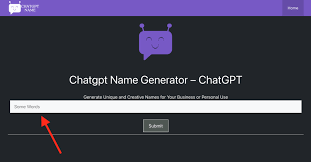The Impact of IT Staff Augmentation on Remote Software Development
The Impact of IT Staff Augmentation on Remote Software Development
Recently, there has been a significant shift in how hiring of dedicated remote software developers emerges, with more people working remotely. This shift is occurring rapidly as a result of improved technology and a diverse workforce. Many businesses had turned to remote work since they had no other options. In this context, part time remote software developer has become essential for businesses seeking to manage the challenges and profit on the opportunities associated with remote software development.
Understanding IT Staff Augmentation
Before we discuss how it affects remote software development, let’s first understand IT staff augmentation. Basically, it is when a company temporarily hires outside assistance to add to its own development team. Individual developers or dedicated software developers teams can provide remote support to the organisation’s objectives and goals.
Increase of Remote Software Development
Remote software development has become more popular for a few reasons. Begin with the , because of new tools that make it easy for teams to work together, like Leeway, Microsoft Teams, and Zoom. These tools let people talk in real-time, share files, and have video meetings, so even if team members are far apart, they can still work closely. Additionally, it is now possible to work from home more easily because of the widespread availability of high-speed internet.
With a steady web association, many engineers can get to the assets and devices they need to play out their positions successfully from essentially anyplace in the world. Furthermore, the Coronavirus pandemic has sped up the reception of remote work rehearses across enterprises. As organisations had to close their actual workplaces and change to remote work to guarantee the security of their representatives, many found that remote work was conceivable as well as favourable with regards to cost reserve funds, efficiency, and worker fulfilment
Its Effect Global IT staffing solutions and Increase on Distant Programming Development
Remote IT staff expansion has emerged as an important strategy for organisations looking to capitalise on the benefits of remote programming development. Its effect on long-term programming improvement can be analysed from several angles:
1. Admittance to Specific Talent
One of its key advantages is the ability to acquire certain skills that may not be available in-house. By bringing in external specialists, organisations can tap into a varied pool of skills and expertise to satisfy unique project requirements. This is especially crucial in long-term programming improvement, because the ability pool is not constrained by topographical boundaries. Associations can leverage IT staff expansion to hire engineers with specialised skills or space expertise, regardless of where they are located. For example, a company based in the United States may opt to grow its development team with programmers from Eastern Europe with expertise in blockchain innovation. Thus, the organisation can accelerate the development of a blockchain-based application while leveraging specific knowledge on outside ability.
2. Adaptability and Scalability
IT staff expansion offers associations more prominent adaptability and versatility in dealing with their improvement groups. Rather than recruiting full-time workers to fulfil fluctuating task needs, associations can increase their groups with outside ability on a venture-by-project premise. This permits them to increase their groups or down depending on the situation, without the above costs and regulatory weight related with customary recruiting processes. With regards to distant programming advancement, this adaptability is especially significant. Remote groups are in many cases appropriated across various time regions, permitting associations to keep up with efficiency nonstop. By expanding their groups with engineers from various areas, associations can guarantee persistent advancement on their ventures and speed up chance-to-advertise.
3. Cost-effectiveness
IT staff augmentation might be a less expensive choice for firms than hiring full-time employees. Organisations can avoid the expenditures associated with enrollment, onboarding, and representative benefits by utilising outside talent on an interim basis. Furthermore, an expansion in Remote IT staffing enables organisations to have access to talent from regions with affordable costs, lowering overall costs. Cost-effectiveness is an important consideration when it comes to long-term programming improvements. Remote groups usually work at lower overhead costs than traditional office-based groups since they do not require physical office space or infrastructure. Organisations can increase cost investment funds while maintaining high levels of efficiency and production by extending their remote groups with external talent.
4. Information Move and Expertise Development
IT staff augmentation can help with information flow and knowledge development within organisations. Working close to outer ability allows in-house engineers to learn new improvements, systems, and best practices. This cross-pollination of ideas and expertise can help organisations construct more resilient and tough development teams capable of dealing with a wide range of challenges. Knowledge transfer is extremely important when working remotely on software. Remote groups usually include designers from various foundations and societies, providing unique perspectives and helpful information. By expanding their teams with outside talent, organisations can foster a culture of continuous learning and progression, resulting in long-term progress in the rapidly evolving field of programming improvement.
5. Upgraded Joint Effort and Communication
Finally, expanding the IT workforce helps improve collaboration and communication within remote development teams. Remote groups can stay connected and adjusted regardless of geological distance by utilising contemporary communication and coordination tools. Stages such as Leeway, Microsoft Groups, and Zoom use continual correspondence, document sharing, and video conferencing to enable remote teams to collaborate on projects. These collaboration solutions are essential for bridging the gap between in-house and external developers throughout IT staff augmentation. By integrating a stage for communication and information sharing, organisations may ensure that all colleagues are on the same page and working toward common goals. This creates a sense of community and unity among remote improvement groups, boosting efficiency and progress.
Challenges and Considerations
While IT staffing solutions provide numerous benefits for long-term programming development, it is not without its challenges and concerns. Associations should carefully examine their needs, evaluate projected risks, and establish clear communication lines to ensure the success of their expanding groupings. Furthermore, social differences, language barriers, and time zone differences might impede good collaborative effort in remote groups, necessitating active administration and relief strategies. Furthermore, organisations should prioritise network safety and information security while collaborating with outside talent on remote programming development. With sensitive licensed innovation and private data at stake, organisations should implement robust security measures and standards to protect their resources from digital threats and information breaches.
Conclusion
Overall, best IT staffing services have a significant impact on long-term programming development, providing numerous benefits for organisations looking to leverage external talent to better their in-house teams. From access to specific skills and adaptability on the board to cost-effectiveness and information flow, IT staff expansion enables organisations to build stronger and more coordinated development teams capable of driving growth and achieving their business objectives in the computerised age.
However, organisations must be aware of the challenges and considerations connected with IT staff expansion and take proactive steps to avoid risks and ensure the success of their remote development teams. Organisations can position themselves for success in an obviously serious and dynamic business environment by adopting IT staff expansion as an essential approach for dealing with executive capabilities. At the forefront of the field of global contract IT staffing, Hire Developer differentiates itself as a force for empowerment and corporate success rather than simply a service provider. Hire Developer, is your tour guide through the complex worlds of staffing, technology, and business productivity. Come along on this enlightening adventure with Hire Developer.


